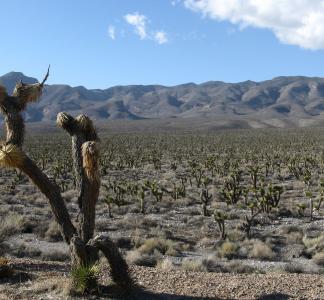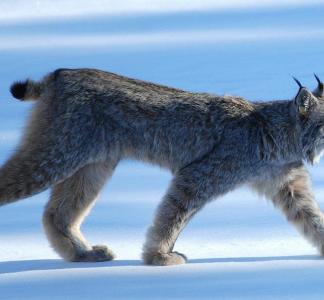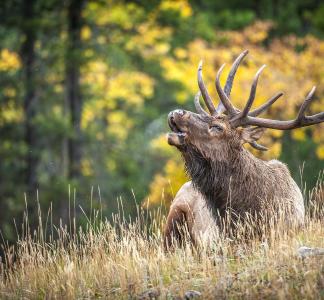A. Jackson Frishman
A refuge or a bombing range?
The Desert National Wildlife Refuge just north of Las Vegas is a precious gem within America’s western public lands. It reaches across six major mountain ranges and hosts seven distinct habitat zones for plant and animal life, from saltbush at the valley floor to bristlecone pines growing at nearly 10,000 feet within the Sheep Mountain Range.
The refuge was originally created to protect habitat for desert bighorn sheep, but it also provides quality habitat for hundreds of other animal and plant species, from collared lizards to bobcats.
These animals need large, undisturbed areas to hunt, forage and search for water, but the future of their habitat is uncertain due to an Air Force proposal to expand Nellis Air Force Base's bombing range. This plan would threaten the refuge by adding new development and roads that could interrupt wildlife migration paths and force wildlife into smaller and smaller areas.
Desert National Wildlife Refuge is an untouched sanctuary filled with wildlife that require large spaces to thrive. More than 1.2 million acres of the refuge is so wild that the U.S. Fish and Wildlife Service has recommended it be protected as designated wilderness, the government’s highest form of land protection.
The threat
The U.S. Air Force has proposed adding over 300,000 acres of land from Desert National Wildlife Refuge to the Nevada Test and Training Range. The refuge is co-managed by the U.S. Fish and Wildlife Service and the Air Force under an agreement that currently allows the Air Force access to 51 percent of the area, or 846,000 acres.
The expansion of the Nellis bombing range would disturb plant and wildlife habitat, including range areas for bighorn sheep. It would also eliminate public access to prime hunting and outdoor recreation spots.
If the planned takeover goes through, it will also prevent the U.S. Fish and Wildlife Service from effectively protecting endangered and threatened species in the area.
Also at risk within the refuge are important traces of Native American culture from the Southern Paiute people and others. Petroglyphs, roasting pits and other sites have a lot to teach us about the land's original inhabitants, and handing the area over to the Air Force would risk mismanagement of precious cultural resources.
What we're doing
-
Participating in environmental analysis
We are engaging with the U.S. Fish and Wildlife Service on the environmental impact study of the Desert National Wildlife Refuge by generating public comments.
-
Assisting local partners
We’re helping local partners fund their meetings and negotiations with the Department of Defense.



